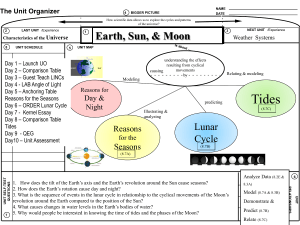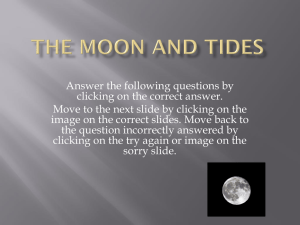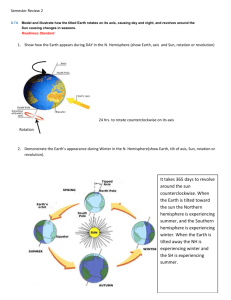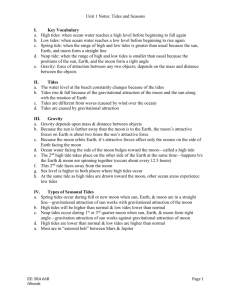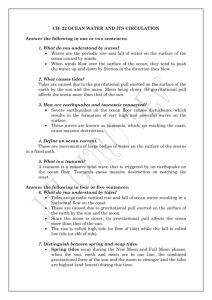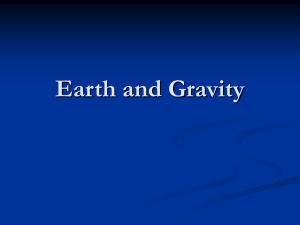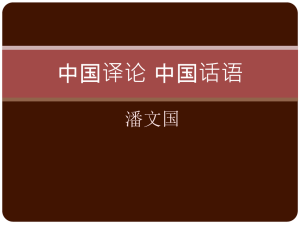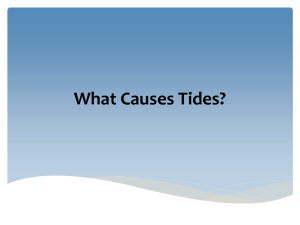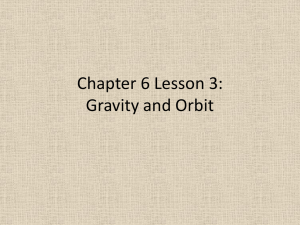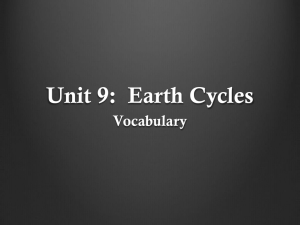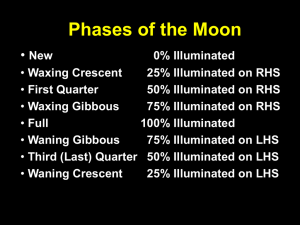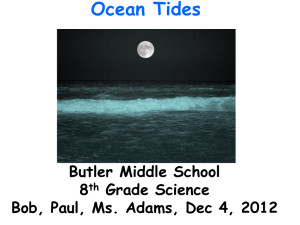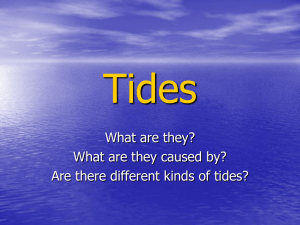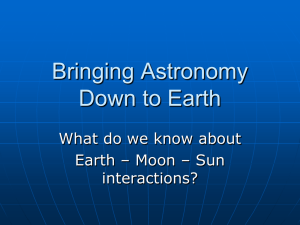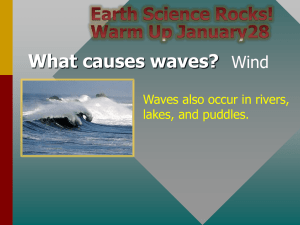What causes tides?
advertisement
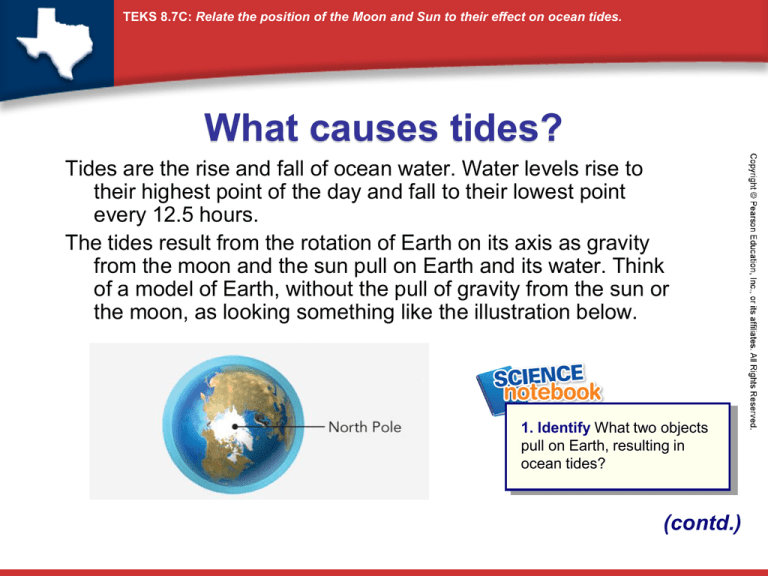
TEKS 8.7C: Relate the position of the Moon and Sun to their effect on ocean tides. What causes tides? Tides are the rise and fall of ocean water. Water levels rise to their highest point of the day and fall to their lowest point every 12.5 hours. The tides result from the rotation of Earth on its axis as gravity from the moon and the sun pull on Earth and its water. Think of a model of Earth, without the pull of gravity from the sun or the moon, as looking something like the illustration below. 1. Identify What two objects pull on Earth, resulting in ocean tides? (contd.) TEKS 8.7C: Relate the position of the Moon and Sun to their effect on ocean tides. The moon pulls strongly on the water on the side of Earth closest to the moon, causing the water to bulge. It also pulls less strongly on Earth and on the water on the far side of Earth, which results in tides. 2. Explain How does the pull of the moon’s gravity cause high tide on the side of Earth opposite the moon’s position? (contd.) TEKS 8.7C: Relate the position of the Moon and Sun to their effect on ocean tides. Though the sun is much farther from Earth than the moon, its huge mass exerts a pull of gravity that also affects Earth’s ocean tides. Together, the effects of the sun and the moon depend on the moon’s phase—the position of the moon relative to the sun and Earth. • During new moon or full moon, the sun, the moon, and Earth are in a line. The result is a spring tide. (contd.) TEKS 8.7C: Relate the position of the Moon and Sun to their effect on ocean tides. • During first quarter of the lunar month, the line from the moon to Earth is at a right angle to the line between Earth and the sun. The result is a neap tide. The same effect happens during third quarter. First Quarter, Neap Tide 3. Cause and Effect In your own words, relate how the positions of the moon and sun affect ocean tides.



